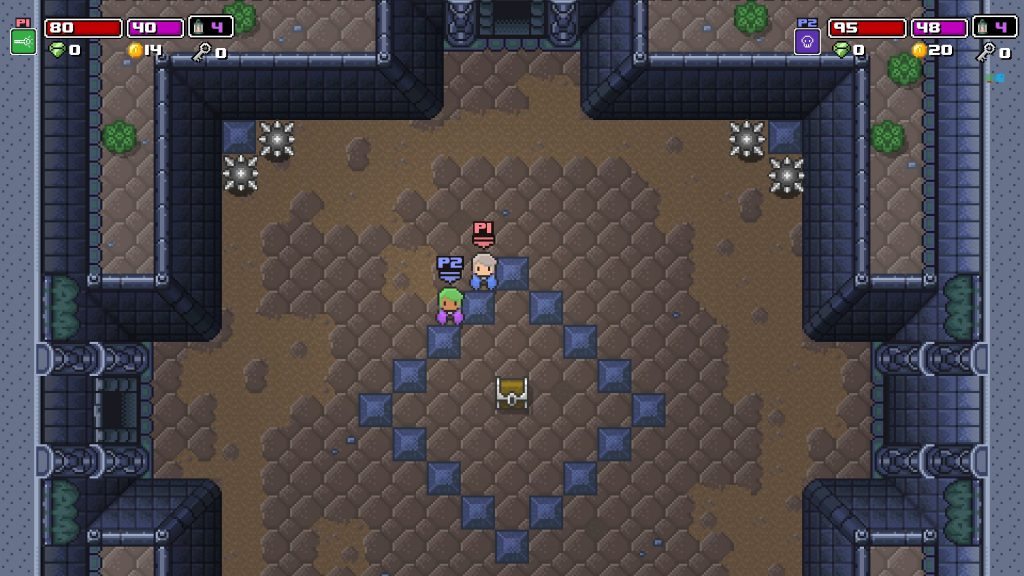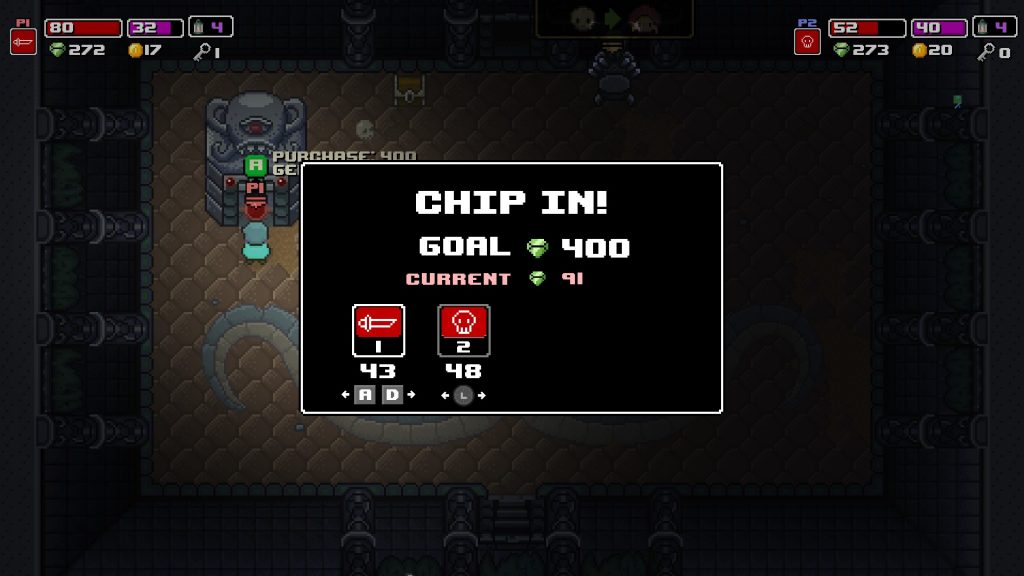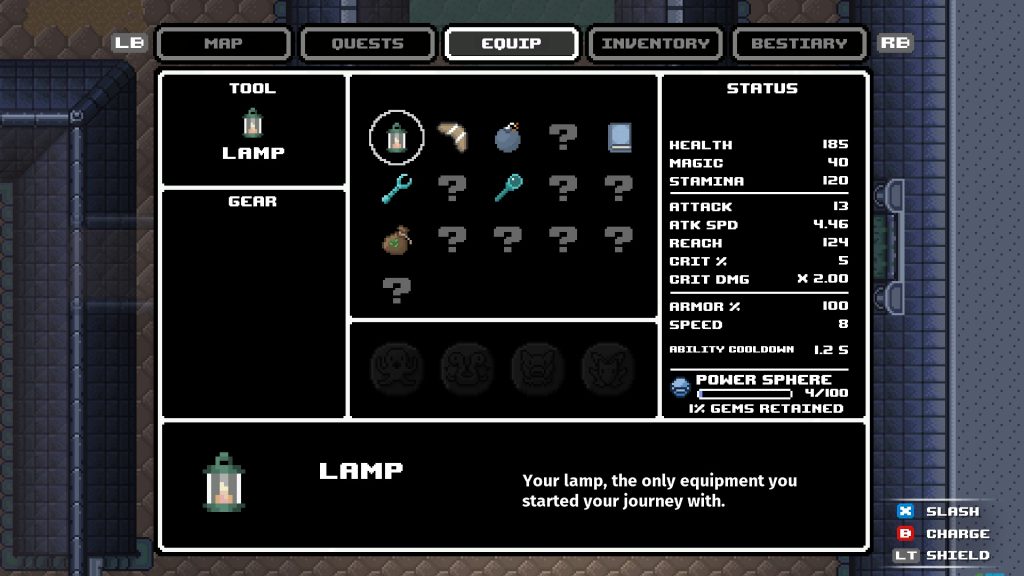A flawed but very fun co-op Zelda-em-up that’s worth your time
Platform reviewed: Steam. Also available on Nintendo Switch.
Table of Contents
Introduction
Like many folks I have certainly been having my share of run playing around in the forest in Valheim. It’s fun to get your survival game on when there is good atmosphere and quality of life in a multiplayer indie game. But sometimes you don’t want to push your luck and hunt for more Trolls, or find the next Burial Chamber for upgrade materials, or your usual Viking crew just isn’t around.
Around the same time I started playing Valheim, I found another game on Steam which really piqued my interest the moment I heard about it. It’s called Rogue Heroes: Ruins of Tasos, and yes that title is a mouthful.
Developed by Heliocentric Studios and published by Team 17, who has been killing it with amazing games like Neon Abyss, Tasos is an online co-op dungeon crawler with some roguelite elements, set in a world very similar to A Link to the Past on the SNES. You play a hero who is trying to save the day using the power of capitalism. After waking up and hopping out of bed, they quickly set off to beat dungeons bosses and find the loot needed to save the world, or at least unlock items for a better chance of saving it the next run.
Unlike a game like Zelda, however, your deaths and resurrections are part of the in-game universe, and one character even comments on your return from the dead the first time it happens.
Game Basics
After waking up and leaving your house for the first time, you meet your town handyman. This fellow asks if you’re up for rebuilding the town’s stores and amenities, because things are currently in a bad state of affairs, with just a few decrepit houses nearby. All your builder needs to finance this venture is a handful of jewels that you can procure from the local dungeons. So, it’s off to find some loot!

If you have experience with overhead Zeldas you know the world layout here: the main town area has some villagers milling about their homes, and some vendors. The surrounding areas have some basic enemies, and the dungeons contain its own unique enemies (e.g. your obligatory bats and wizards shooting sparklies), pits to avoid, puzzles to solve, and of course a boss to fight at the bottom level.
There are a lot of really nice touches to the gameplay, which shows a lot of thought went into making the game feel like Zelda, but still stay consistent with some modern roguelite-ish sensibilities. [Ed Note: Some may not consider this game remotely roguelite or roguelike. If so, that’s totally fine, you do you.] For example, you can acquire a hookshot (grappling hook) or bow while traversing a dungeon, but it’s a glass version of the item; when you die it will shatter and vanish from your inventory. You can still earn the non-ephemeral version of these items by beating dungeons, of course, and some items can just be purchased from a vendor in your town with dungeon jewels (once you unlock said vendor).
Also dungeons are randomly generated, but only sort of. In a fully procedurally-generated world, the rooms of a dungeon could be of any size and contain 1 enemy, or sometimes dozens of them. In Tasos, the dungeons layouts and enemy placements are selected from a set of curated possible rooms, and then the order and location of the rooms is randomized. This gives you some ability to learn how to traverse the dungeons, while still keeping things interesting.
Controls and Quality of Life
The controls are where I was the most surprised by this game. I had planned to go in and just use my controller’s X button to swing my sword and whack the enemies as an old 8-bit-era gamer would naturally do. But you are really missing out if you do this, as using the right analog stick swings your sword in the direction you push in the style of a twin-stick shooter, meaning you can be running in one direction and swing behind you, for example. This was a huge revelation, and I was amazed how much better the already great controls felt after switching to this control style.
Like I mentioned earlier with Valheim, there are several quality of life touches in this game which are very welcome and raise a game’s standing in my mind. Firstly, fast travel is unlocked very quickly in the game. To get to the first dungeon, your character only has to walk there once. The fast travel waypoint is right nearby and is quickly activated. The next time you want to travel to the dungeon, you just walk south from your house and the fast travel statue will quickly put you a couple screens away from the dungeon.
Another nice feature is the dungeon level skips. When you beat the first floor of the dungeon and travel to the next, you immediately have the option of unlocking the shortcut to get right to the current floor the next time you enter. This assumes you have enough jewels to buy the unlock, but this game is very generous with jewels, and pots and vases net you many gems, and chests shower you with them. The loot mechanism in this game feels very nice.
And you’ll be spending a lot of jewels too. Between the dungeon level skips, unlocking new vendors in your town, and buying upgrades for things like your attack power, max life, and new tools, jewels make the economy run in Tasos. But even though you do not forfeit your jewels when dying, you do lose them the next time you want to enter the dungeons, so may as well spend, spend, spend.

Multiplayer and Bugs
It’s also worth talking about the co-op multiplayer. When tackling a dungeon with up to 3 other friends, there are special puzzles specific to multiplayer that you have a chance of getting. I initially enjoyed the idea of tossing the orb from its starting location to where it needed to land to unlock the doors. But I could see how this might get old after a few dozen runs, and thankfully there are plenty of other challenging enemies and traps to navigate.
Unfortunately, multiplayer is where virtually all the bugs I experienced with the game came up. Often when playing online, one of my teammates would interact with an NPC, and my character would then get stuck and be unable to move or interact with anything until we moved to a new screen. There were also a few times a dialog would get stuck on my screen. Again this would fix itself once we moved to a new room.
The one bug I did not experience in multiplayer was probably the most annoying. Exiting the game from the main menu would cause the game to immediately re-launch itself. Every. Single. Time. Happily using the tried and true Alt+F4 did not cause this relaunch behavior.

Verdict
Overall I think Rogue Heroes: Ruins of Tasos is a great game for a certain kind of gamer. If you have nostalgia for the older Zelda games, or like a good dungeon crawler experience generally, and especially if you have a couple friends to play with and some patience, this game is a great time.
Disclaimers
I bought this game with my own money. I did not receive any sponsorship or anything in exchange for this review. No company or person received any advanced copy of this review nor was anyone given edit approval.

